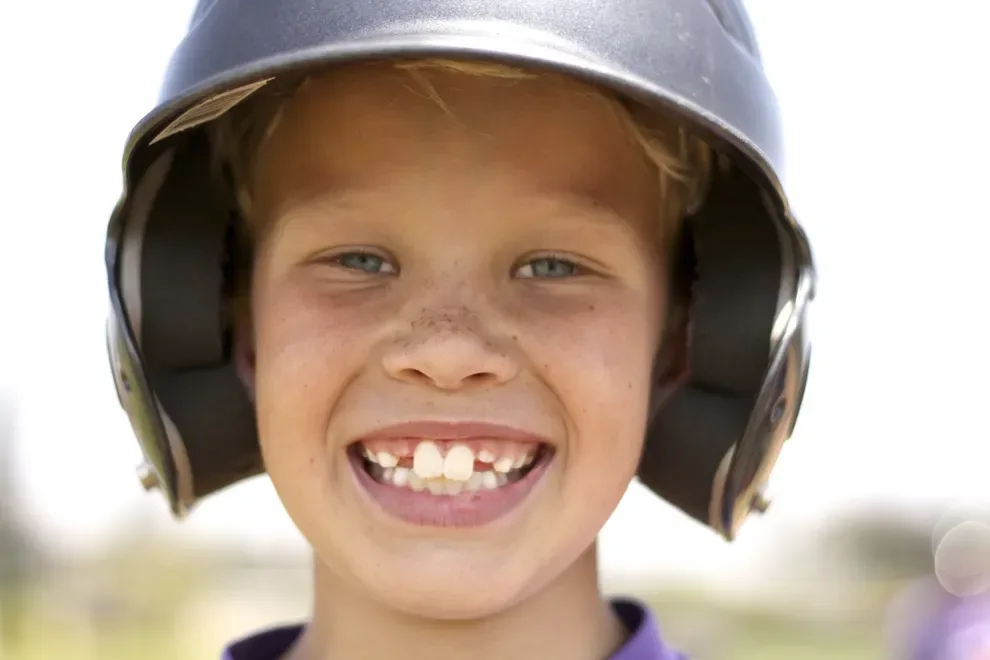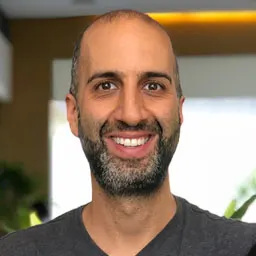Your Child Has Mesiodens. Now What?

Table of Contents
- How Does Mesiodens Occur?
- Risk Factors
- Treatments & Removal
- Why Regular Dentist Visits?
- Frequently Asked Questions
- References
All normal, healthy people receive two sets of teeth in their lifetime. Primary teeth, also known as baby teeth, come first. They are replaced a few years later with adult teeth, also called permanent teeth.
Kids typically have 20 baby teeth. Adults enjoy 32 teeth. But in some cases, an extra or supernumerary tooth grows in children and adults. These extra teeth are called mesiodens.
Having mesiodens is rare, and it happens more to males than females. This dental oddity is when you have an extra tooth that appears at the front of your upper jaw. The extra tooth grows behind or between your two front teeth and is typically conical in shape. This extra tooth typically comes in with your adult teeth, rather than with baby teeth.
If a mesiodens does grow in your child's mouth, it is important to have it treated early. Leaving this tooth can cause dental problems later in their life.
How Does Mesiodens Occur?
It is not known exactly how mesiodens happen, but they are believed to be the most common dental anomaly, occurring in up to 2 percent of the population. Some believe genetics are responsible, and others believe environmental factors are the cause. Still, others attribute the growth of this extra tooth to changes in dental development. Other occurrences that may contribute to mesiodens are various health conditions:
Cleft palate or cleft lip
A rare genetic condition known as Cleidocranial Dysplasia leads to unusual development of teeth and bones
A rare genetic disorder known as Gardner's Syndrome results in growths appearing on different parts of the body
A rare genetic syndrome is known as Orofaciodigital Syndrome impacts the development of the teeth and mouth, along with other facial features, toes, and fingers
In some rare cases, it is possible for multiple mesiodens to grow, which are referred to as mesiodentes.
What Are the Risk Factors with Mesioden?
If your child has mesiodens, there are certain health risks they may experience.
Interfering with other teeth
One of the main concerns with mesiodens is the impact it causes on surrounding teeth. It can cause:
Displacement of the surrounding teeth
A delayed eruption of other teeth
Misalignment of teeth resulting in problems with biting foods
An increased crowding in the area the mesioden grew
A space occurring between the two front teeth
An abnormal bend occurs where the root or crown of a tooth grows
The root structure of the tooth dissolving
It is important to identify and treat mesiodens in your child's teeth as it will interfere with their surrounding teeth and lead to future orthodontic or dental treatments in the future.
Formation of cysts
If a mesiodens remains un-erupted or impacted in your child's mouth, it can lead to a dentigerous cyst. This cyst is a sac of fluid. A dentigerous cyst is usually small and won't cause symptoms, but it can grow larger if unattended, leading to the displacement of surrounding teeth and swelling. Cysts form in conjunction with mesiodens in 4 to 11 percent of cases.
Eruption in nasal cavity
In some cases, untreated mesiodens have erupted inside the nasal cavity, instead of a patient's mouth. It is rare for this to occur, but if it does, it will include nasal obstruction, swelling, and pain.
Treatments and Removal of Mesiodens
Treatment for mesiodens typically requires removal or extraction. In rare cases when the mesiodens is a baby tooth, it shouldn’t present complications, although your dentist will want to keep monitor it, wary of any unwanted developments or complications.
An extraction is a removal of the mesiodens and can be performed in one of two ways:
Surgical. In more complex cases of mesiodens, such as if it is impacted, a surgical extraction is necessary. This surgery is performed by an oral surgeon and involves an incision and stitches.
Simple. In a simple extraction, the mesiodens is removed without surgery, so no incisions are made in your mouth. Your dentist will use a tool to grip and loosen the mesiodens until it comes out of your mouth.
When a child is diagnosed with mesiodens, dentists want to treat it as soon as possible to prevent future dental problems. Removing this tooth does present certain risks to the surrounding area where adult teeth need to come in. Extraction of the mesiodens could result in a delay of adult teeth erupting.
After extraction of a mesiodens, your dentist will want to watch the growth of other teeth carefully to ensure they come in properly. It is not uncommon for those who have had an extraction of mesiodens to require future orthodontic treatments to correct positioning or alignment of the surrounding teeth.
Why Regular Dental Visits Are Important
Most people do not put dental visits at the top of their to-do lists. The dentist’s office can seem like a scary place, but there are numerous advantages to seeing your dentist regularly and these reasons explain why you should schedule your visit today.
Regular dental visits prevent future issues with your teeth. One of the best advantages of having regular dental visits is your dentist can spot concerns in your teeth and gums that could turn into larger issues. The growth of mesiodens is one of those concerns that can be detected and treated right away.
Saving your teeth is another advantage of regular dental visits. Sometimes a tooth can become so decayed that the only solution is to pull it out. Regular checkups would allow your dentist to detect the beginning of decay and treat it before extraction is the only solution.
Having regular dental visits allows the hygienist to detect any flaws in your daily brushing and flossing routines. They can educate you on how to properly care for your teeth at home to prevent dental or oral issues.
Treating related issues that you may not associate with dental care can also be provided through regular dental visits. Concerns with headaches or sleeping from grinding your teeth can be addressed and treated.
Treatment of bad breath is another advantage of regular dental care. Halitosis is a condition that can occur if you repeatedly practice poor oral hygiene habits, but it also be a sign of other health issues related to the esophagus, stomach and the full digestive track.
A beautiful smile is perhaps the best benefit of regular dental care. Keeping your teeth white comes from regular professional cleanings and following the suggestions from your dentist on how to care for your teeth resulting in a great smile.
These advantages to having regular dental visits should encourage you to make your next appointment today. It can be overwhelming and scary for some to see their dentist, but as you just learned, the advantages far outweigh those concerns.
Frequently Asked Questions
Yes, the impact these extra teeth have on the surrounding teeth can cause serious future orthodontic or dental issues later in life. The full extraction of these extra teeth is necessary to prevent dental development problems.
No. Typically mesiodens will remain impacted in the gum tissue. Since these are extra teeth, and not what your mouth has room for, they should be removed. Braces would not improve the fact that these extra teeth do not fit or align with your other teeth.
Delaying treatment to extract mesiodens can delay the eruption of permanent teeth. Extraction should be scheduled as soon as mesiodens are detected to reduce the risk of future dental issues.
